Shunan Bamboo Sea Scenic Area is located at the junction of Changning and Jiang'an Counties, Yibin City, Sichuan Province, China. It is a national 4A-level tourist attraction and also a national tourist resort. Integrating bamboo scenery, mountains, rivers, lakes, waterfalls and ancient temples, the scenic area is the world's largest natural bamboo forest scenic area with a concentrated area, and its vegetation coverage rate reaches 92.4%. The whole scenic area is in the shape of the Chinese character "之" (zhi), about 13 kilometers long from east to west and 6 kilometers wide from north to south, with a total area of 120 square kilometers. More than 70,000 mu of green bamboo covers 27 steep ridges and over 500 peaks, and there are 58 species of bamboo belonging to 15 genera growing here.
History and Culture
Shunan Bamboo Sea has a long history of bamboo cultivation, and the bamboo culture has continued for more than 2,000 years since the Eastern Han Dynasty. The relief "Phoenix-Snake-Bamboo Composite Totem" on the stone coffin with painted portraits of the Eastern Han Dynasty in the suburbs of Nanxi, Yibin proves that the local ancestors worshipped bamboo totems. During the Northern Song Dynasty, Shunan Bamboo Sea was named Wanlingqing. Huang Tingjian, a famous poet, visited here and saw the vast sea of green bamboo. He immediately used a broom as a brush and wrote the three characters "Wanlingqing" on the Huangsan Stone, hence the name. Shunan Bamboo Sea is one of the birthplaces of Chinese bamboo craftsmanship and one of the three major bamboo carving centers. "Bamboo Sea Bamboo Huang (bamboo carving craft)" has been rated as a national intangible cultural heritage.
Major Attractions
Huaxi Thirteen Bridges
Huaxi (Flower Brook) is about 5 kilometers long, with a stream flowing down the valley. In March (the third month of the lunar calendar, when spring is in full bloom), peach blossoms are pink and pear blossoms are white, and the brook is full of falling flowers, with bees chasing butterflies. Therefore, it is named Huaxi. Along this stream, there are thirteen bridges built during the Ming and Qing Dynasties, namely Nver Bridge (Daughter Bridge), Gulong Bridge (Ancient Dragon Bridge), Changshou Bridge (Longevity Bridge), Wanshun Bridge, Zhuangyuan Bridge (Top Scholar Bridge), Jielong Bridge (Dragon-Connecting Bridge), Zhongyi Bridge (Loyalty Bridge), Tongxin Bridge (Concentric Bridge), Jixian Bridge (Sage-Gathering Bridge), Huixian Bridge (Fairy-Meeting Bridge), Guxi Bridge (Ancient Brook Bridge), Yuwang Bridge (Fish King Bridge) and Gaosheng Bridge (Promotion Bridge). Each bridge has its own story.
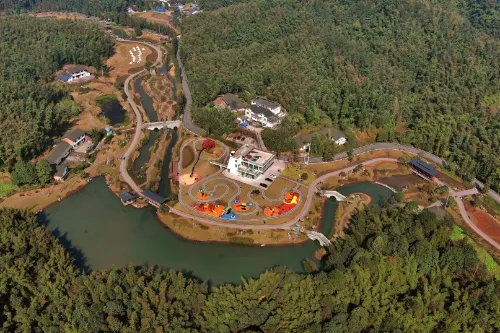
Haizhong Lake
It was originally a low-altitude trough valley on the bamboo sea mountain, and later a dam was built to form a lake. The lake covers an area of about 60 mu, with an open and vast surface, just like a "haizi" (a term used in some parts of China to refer to a lake) in the boundless bamboo sea, hence the name Haizhong Lake. Haizhong Lake is a filming location for the movie Crouching Tiger, Hidden Dragon.
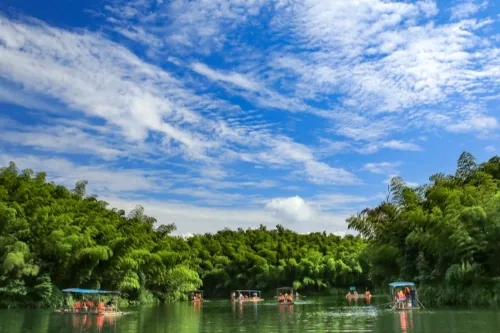
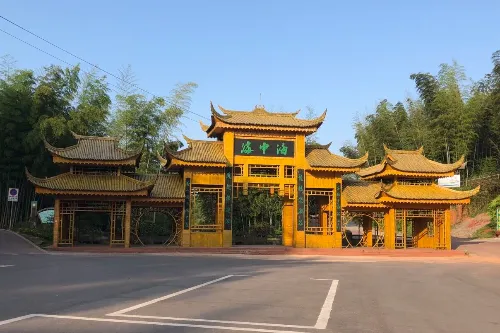
Shunan Bamboo Sea Museum
It is the largest professional bamboo museum in China, covering an area of 6,668 square meters and a construction area of more than 3,800 square meters. The museum integrates the collection and protection of bamboo cultural relics, exhibitions, academic research and social education, with the purpose of "tracing the ancient national culture and displaying the essence of bamboo for ten thousand years".
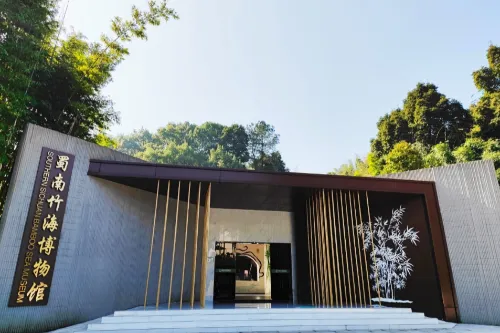

Xianyu Cave
It is a wonder of a natural karst cave, with thousand-year-old Buddha statues hidden inside and stalactites of various shapes. It is known as "a blessed place in the fairyland of the bamboo sea".
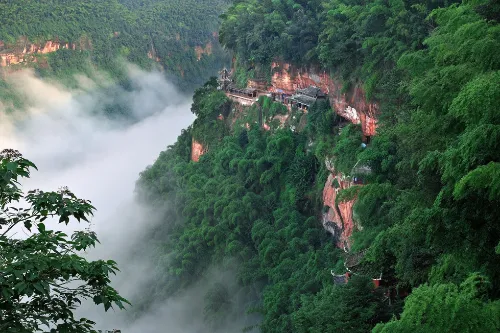
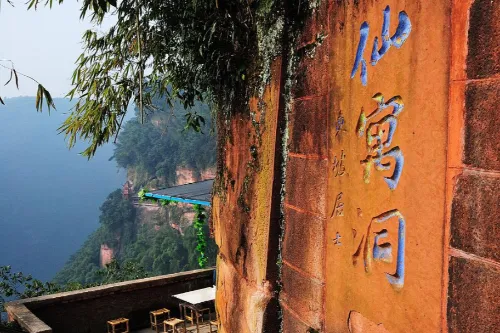
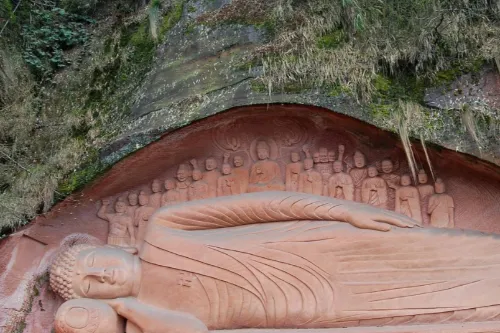
Qinglong Lake
Known as the "Jiuzhaigou in the bamboo sea", taking a bamboo raft to cruise on the lake allows you to enjoy the beautiful scenery of the lake and mountains and experience the quiet beauty of the bamboo forest secret land.
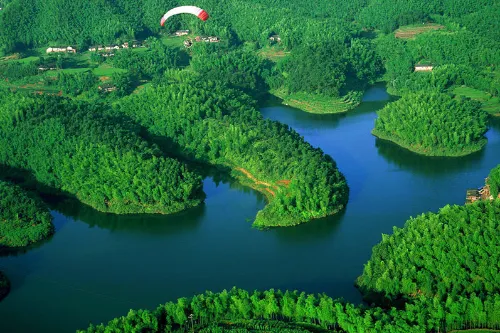
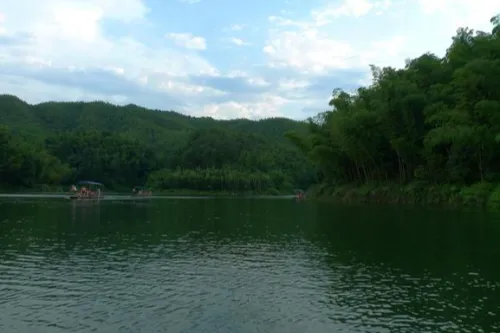
Emerald Corridor
It is a winding bamboo forest path of several kilometers, with green bamboos shading both sides and bamboo leaves overlapping to form a canopy. It is suitable for hiking and taking photos.
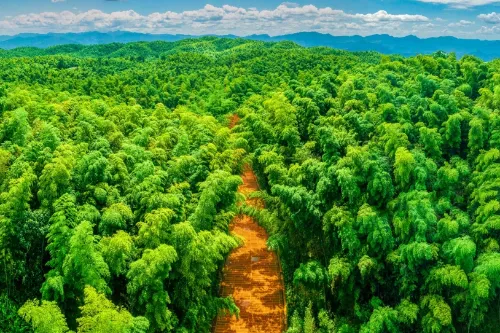
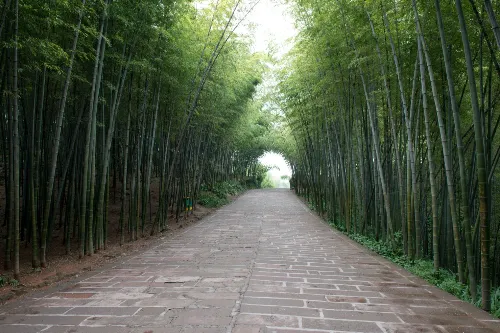
Colorful Waterfall
It is a natural waterfall deep in the bamboo forest. The water rushes down from a high place, and when the sun shines, the water mist refracts colorful lights.

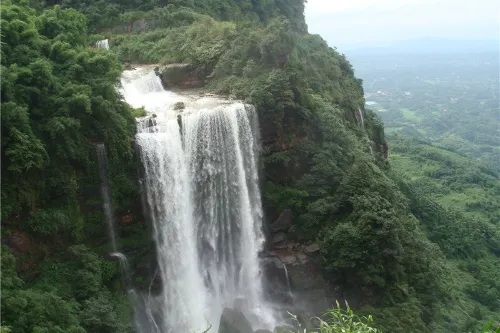
Tianbao Village
Located in the southeast of Shunan Bamboo Sea, it is adjacent to Xianyu Cave. Inside, there are scenic spots such as "Yinxiu Valley", "Chengyao Rock", "Banbian Building Ruins", "Huangsan Stone" and "Splendid Pastoral". Tianbao Village was originally a natural rock cave, about 1,500 meters long, 20 meters high and 10 meters wide.

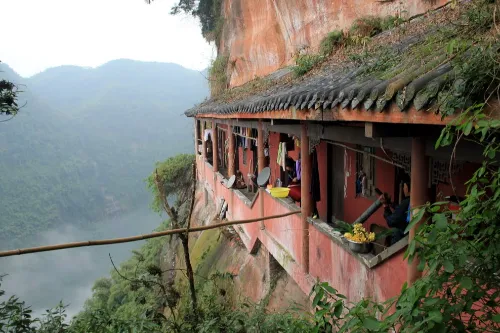
Longyin Temple
Longyin Temple is a Buddhist temple, also known as Longwei Temple. It is located on Jiulong Mountain, which is 980 meters above sea level and is the second highest peak in Shunan Bamboo Sea. Climbing to the top, you will have the feeling of "seeing all the mountains small" (a line from a famous Chinese poem, meaning feeling the grandeur of the scenery and the insignificance of surrounding mountains).
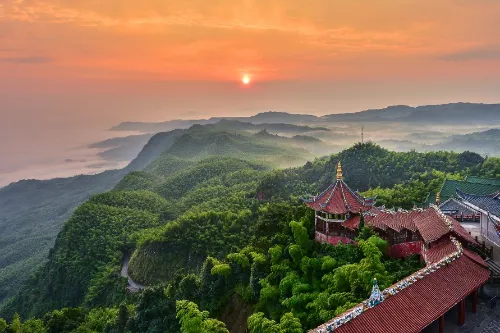

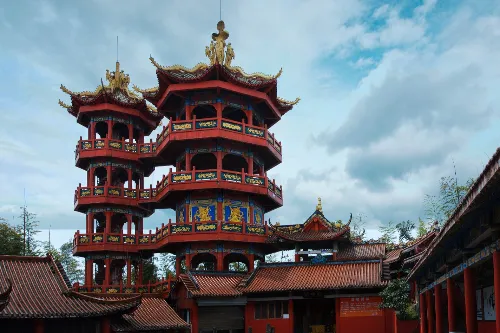

Baishou Platform (Birthday-Worshipping Platform)
It is the filming location for the "Hundred Turtles Worshipping the Birthday" scene in the Chinese landscape painting scroll at the opening ceremony of the 2008 Beijing Olympic Games. It is also one of the "100 Most Beautiful Scenic Shooting Spots in Sichuan" and a landmark landscape of Shunan Bamboo Sea. The low hills at the foot of the mountain are like countless long-lived divine turtles worshipping the birthday, hence the name Baishou Platform.
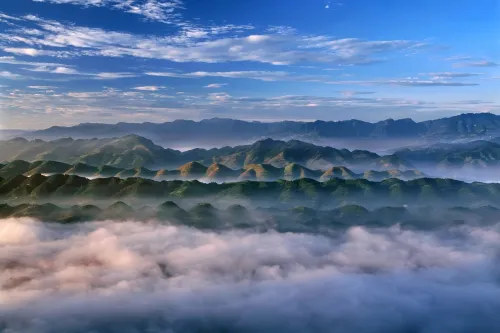
Bamboo Tip Walk
The main plank road is about 1.7 kilometers long, winding through the bamboo forest throughout. It is like a wandering dragon swirling, dancing and billowing in the bamboo forest. Here, tourists can watch moso bamboos up close and experience the "Bamboo Tip Walk". Looking into the distance from here, you can not only enjoy the bamboo sea like rolling waves, but also see the distant landscape of mountains, rivers and idyllic fields.
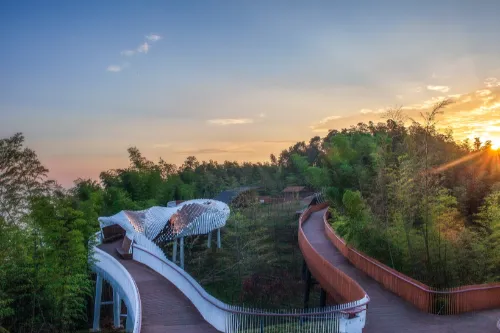
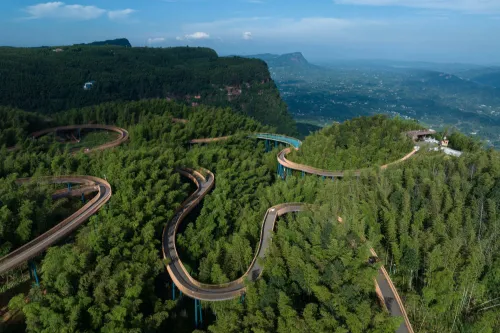
Guanhai Tower (Sea-Viewing Tower)
Originally named Diaohuang Tower, it is associated with Huang Tingjian, a renowned litterateur and calligrapher of the Northern Song Dynasty. During the Northern Song Dynasty, Huang Tingjian wandered through the Shunan Bamboo Sea. When he climbed to this spot and was greeted by the endless expanse of green bamboo, he couldn't help but exclaim repeatedly, "Magnificent! Magnificent! A boundless sea of bamboo waves!" Later, a viewing tower was built here. The present-day Guanhai Tower is a restored reconstruction on the original site.
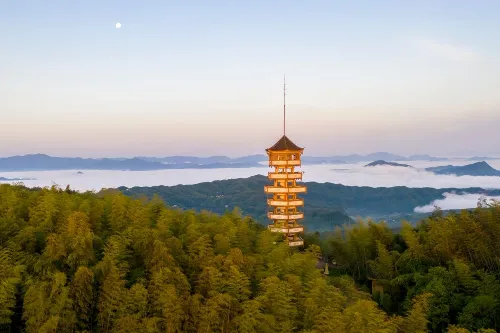
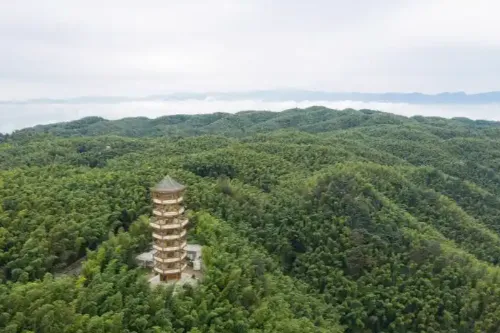
Recommended Tour Routes
The following are several recommended tour routes:
Essential Route: Day 1: Chengdu → Yibin → Shunan Bamboo Sea → Tianbao Village → Xianyu Cave → Xiannü Lake (Fairy Lake) → Haizhong Lake → Stay in the bamboo sea; Day 2: Guanyun Pavilion → Wangyou Valley (Valley of Forgetfulness) → Bamboo Sea Cableway → Emerald Corridor → Guanhai Tower → Chengdu.
Sightseeing Route: On the first day, depart from Chengdu, arrive at Shunan Bamboo Sea after lunch, visit Wangyou Valley Scenic Area and then Shunan Bamboo Sea Museum; on the second day, head to Xianyu Cave after breakfast, climb Guanhai Tower to enjoy the panoramic view of the bamboo sea and visit Emerald Corridor after lunch, then return to Chengdu in the afternoon.
Parent-Child Two-Day Tour: Museum → Wangyou Valley → Haizhong Lake → Xianyu Cave/Tianbao Village → Huaxi Thirteen Bridges → Yongjiang Village.
Summer Parent-Child Three-Day Tour: Guanyun Platform → Haizhong Lake → Xianyu Cave/Tianbao Village → Longyin Temple → Huaxi Thirteen Bridges → Wangyou Valley → Museum → Peach Blossom Land (a scenic spot named after the classic Chinese fable about a utopia) → Yongjiang Village → Qidonggou (Seven Caves Valley).
Tour Tips
- From spring to summer (March - June), the bamboo forest is lush and green with a cool climate, making it an ideal summer resort; from autumn to winter (September - December), the bamboo forest presents a crisscross of golden hues in autumn, and you can enjoy the morning mist over the bamboo sea in winter. You can choose your travel time according to your preferences.
- The scenic area is large, so you can choose to take the scenic area shuttle bus or cableway to save energy and time.
- You can stay in the characteristic bamboo houses within the scenic area to experience a primitive ecological lifestyle.
Notes
- There are many mosquitoes deep in the bamboo forest, so it is recommended to bring mosquito repellent spray.
- Some hiking routes are slippery, so it is recommended to wear non-slip shoes.
- Respect nature: do not damage the bamboo forest, do not litter, and protect the scenic area's environment.
Transportation
- Self-driving: It takes about 4 - 5 hours to reach the scenic area from Chengdu, Chongqing or Yibin.
- High-Speed Rail + Shared Ride: There are direct buses to Shunan Bamboo Sea from Chengdu, Chongqing and Yibin.
- Intercity Coach: There are direct intercity coaches to Shunan Bamboo Sea from Chengdu, Chongqing and Yibin.
Opening Hours
The scenic area is open 24 hours a day.
Tickets
The ticket price is 100 yuan per person.
You can search for the scenic area's official WeChat public account "蜀南竹海景区" to get the latest updates or purchase tickets online.
Online Booking
Click here to jump to the Trip.com ticketing platform for ticket purchase.


